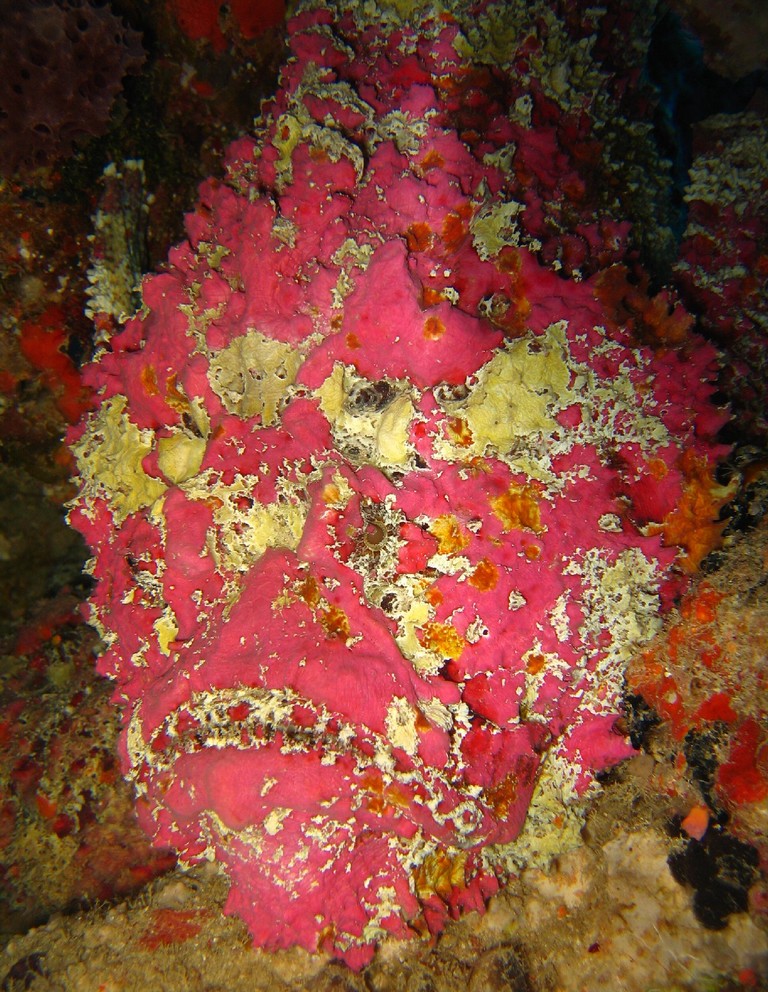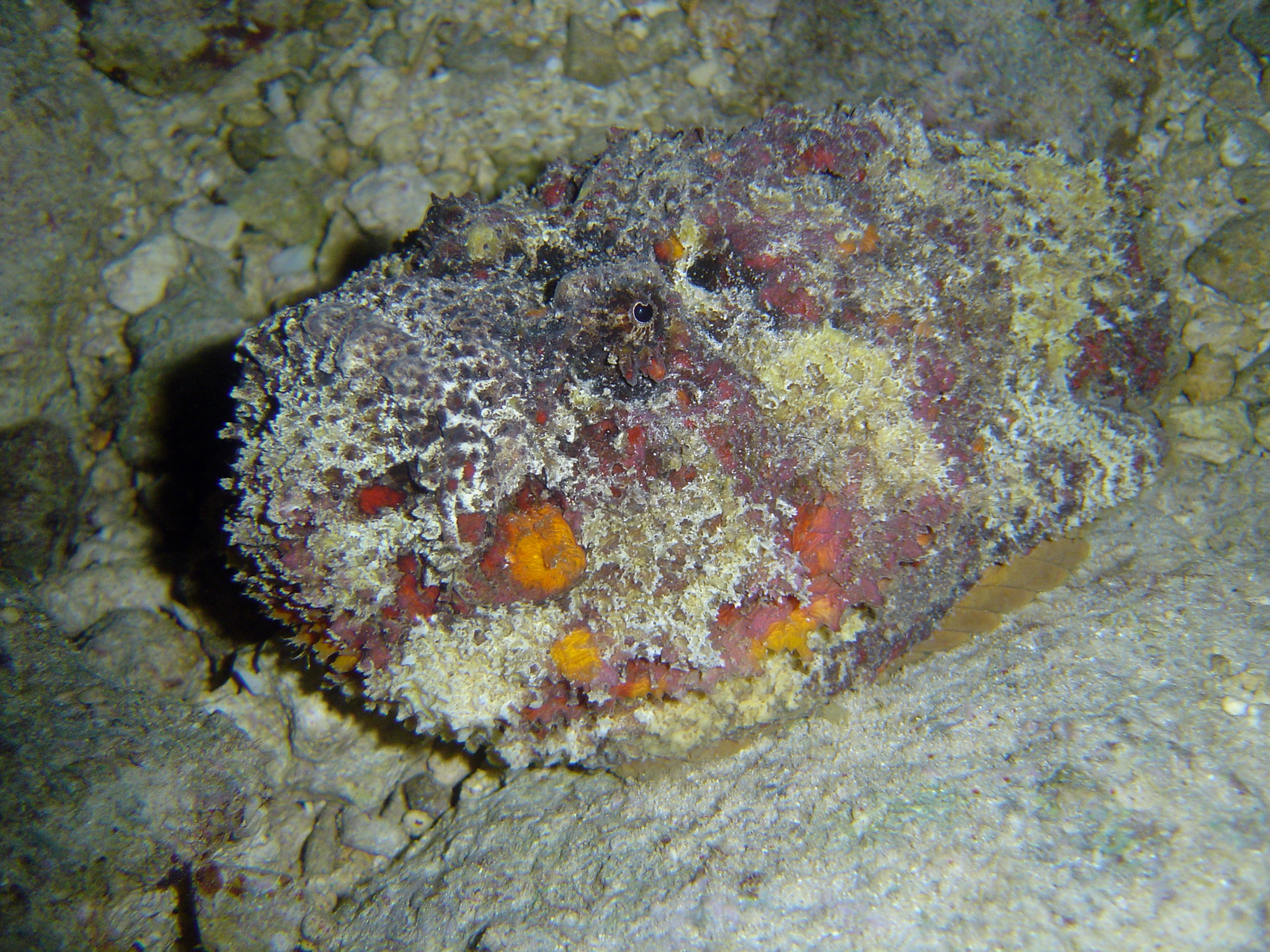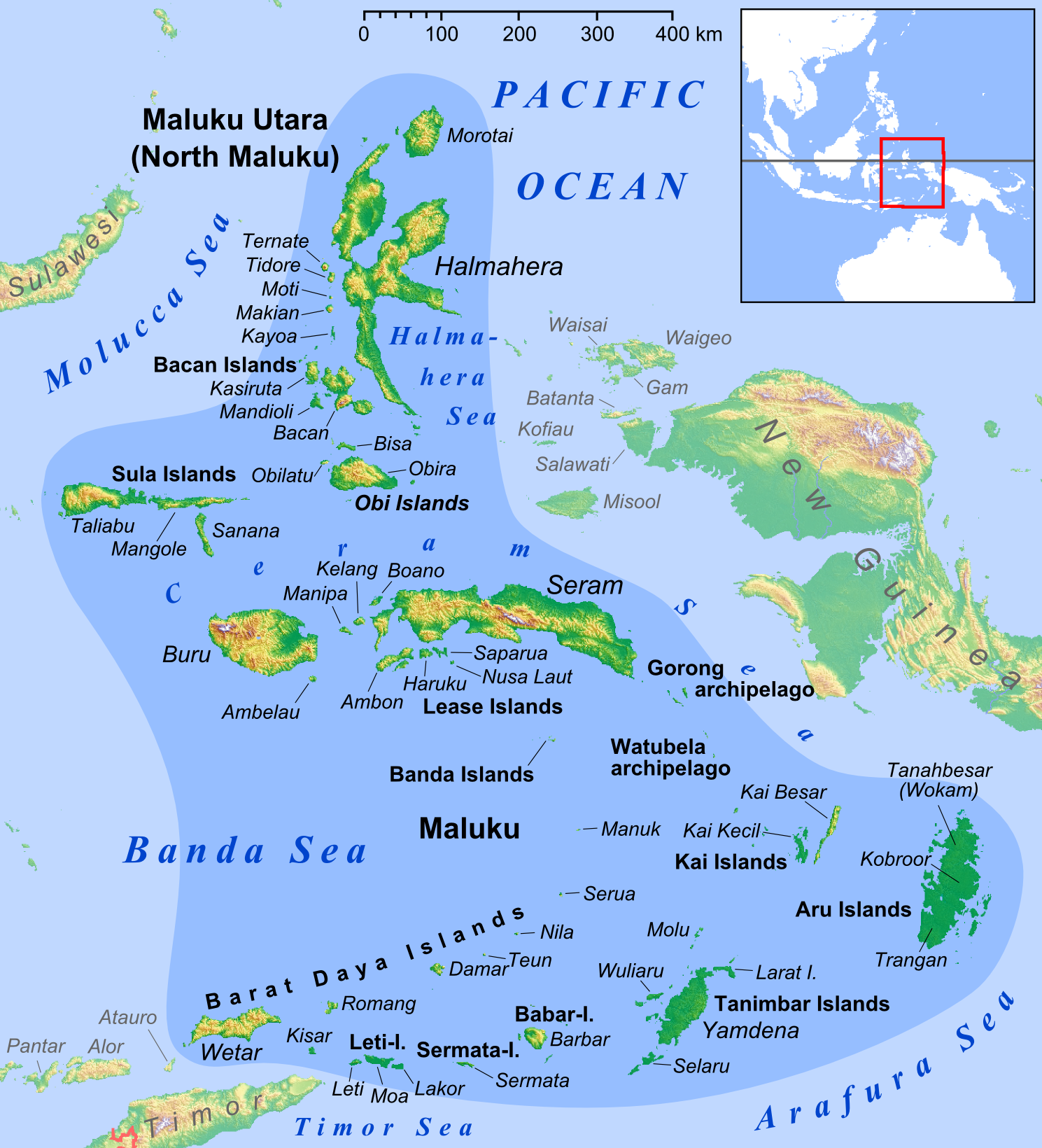|
Stonefish
''Synanceia'' is a genus of Actinopterygii, ray-finned fish belonging to the subfamily Synanceiinae, the stonefish, which is Taxonomy (biology), classified within the Family (biology), family Scorpaenidae, the scorpionfish and relatives. Stonefish are the most venomous fish known; stings can be fatal to humans. They are found in the coastal regions of the Indo-Pacific. They are sometimes confused with the Bullrout, freshwater lionfish. Taxonomy ''Synanceia'' was first described as a genus in 1801 by the German naturalists Marcus Elieser Bloch and Johann Gottlob Theaenus Schneider with ''Scorpaena horrida'', which had been Species description, described by Carl Linnaeus in 1766 from Ambon Island (Indonesia), as its type species. The genus ''Synanceia'' is classified within the Tribe (biology), tribe Synanceiini which is one of three tribes in the subfamily Synanceeinae within the family Scorpaenidae. Despite this, other authorities regard Synanceiidae as a valid family and the ... [...More Info...] [...Related Items...] OR: [Wikipedia] [Google] [Baidu] |
Synanceia Verrucosa
''Synanceia verrucosa'', the reef stonefish or simply stonefish, is a species of Venomous fish, venomous, marine ray-finned fish, belonging to the subfamily Synanceiinae which is Taxonomy (biology), classified as being within the Family (biology), family Scorpaenidae, the scorpionfishes and their relatives. It is the most widespread species of stonefish, mostly found in shallow waters of the Red Sea and the Indo-Pacific. It possesses highly effective venom which can be lethal to humans. It is the type species of ''Synanceia''. Taxonomy ''Synanceia verrucosa'' was first formally Species description, described in 1801 by the German naturalists Marcus Elieser Bloch and Johann Gottlob Theaenus Schneider with the type locality given as India. Bloch and Schneider described a new genus, ''Synanceia'', for this species, but in 1856 Eugène Anselme Sébastien Léon Desmarest designated ''Synanceia horrida, Scorpaena horrida'' which had been described by Carl Linnaeus in 1766, as the type s ... [...More Info...] [...Related Items...] OR: [Wikipedia] [Google] [Baidu] |
Synanceia Horrida
''Synanceia horrida'', the estuarine stonefish, hollow-cheek stonefish, horrid stonefish, rough stonefish or true stonefish, is a species of venomous, marine ray-finned fish, a stonefish belonging to the subfamily Synanceiinae which is classified as being within the family Scorpaenidae, the scorpionfishes and their relatives. It is a benthic fish which is found in the Indo-Pacific region. This species is considered to be one of the most dangerous venomous fish in the world. It is a popular exhibit in public aquaria and is found in the private aquarium trade. Taxonomy ''Synanceia horrida'' was first formally described in 1766 as ''Scorpaena horrida'' by Carl Linnaeus in volume 1 of his 1766 ''Systema naturae sive regna tria naturae'' with its type locality given as Ambon Island in Indonesia. In 1856 Eugène Anselme Sébastien Léon Desmarest designated this species as the type species of the genus ''Synanceia'', which had been described in 1801 by Marcus Elieser Bloch and Johann ... [...More Info...] [...Related Items...] OR: [Wikipedia] [Google] [Baidu] |
Venomous Fish
Venomous fish are species of fish which produce strong mixtures of toxins harmful to humans (called venom) which they deliberately deliver by means of a bite, sting, or stab, resulting in an envenomation. As a contrast, poisonous fish also produce a strong toxin, but they do not bite, sting, or stab to deliver the toxin, instead being poisonous to eat because the human digestive system does not destroy the toxin they contain in their bodies. Venomous fish do not necessarily cause poisoning if they are eaten, as the digestive system often destroys the venom.Poisonous vs. Venomous fish: What’s the difference? Reef Biosearch. Retrieved 17 July 2009. There are at least 1200 species of venomous fish, Smith WL and Wheeler WC (2006 [...More Info...] [...Related Items...] OR: [Wikipedia] [Google] [Baidu] |
Synanceiinae
Synanceiinae is a subfamily of venomous ray-finned fishes, waspfishes, which is classified as part of the family Scorpaenidae, the scorpionfishes and their relatives. These fishes are found in the Indo-Pacific oceans. They are primarily marine, though some species are known to live in fresh or brackish waters. The various species of this family are known informally as stonefish, stinger, stingfish and ghouls. Its species are known to have the most potent neurotoxins of all the fish venoms, secreted from glands at the base of their needle-like dorsal fin spines. The vernacular name, stonefish, for some of these fishes derives from their behaviour of camouflaging as rocks. The type species of the family is the reef stonefish ('' Synanceia verrucosa''). Taxonomy Synanceiinae, or the family Synanceiidae, was first named and recognised as a grouping of related taxa by the English naturalist William Swainson in 1839. The 5th edition of ''Fishes of the World'' treats this groupin ... [...More Info...] [...Related Items...] OR: [Wikipedia] [Google] [Baidu] |
Bullrout
The bullrout (''Notesthes robusta''), also commonly called freshwater stonefish or kroki, is a pale yellowish to dark-brown coloured fish that lives in tidal estuaries and slow-flowing streams in eastern Australia, from southern New South Wales to northern Queensland. It has on a very infrequent occurrence been caught at sea. Its spines are venomous. It is the only member of the genus ''Notesthes''. It is often confused with the true stonefish. Taxonomy and etymology The bullrout was first formally described in 1860 as ''Centropogon robustus'' by the German-born British |
Synanceiini
Synanceiini commonly known as stonefishes, is a tribe of venomous ray-finned fishes classified within the subfamily Synanceiinae, the stonefishes, part of the family Scorpaenidae, the scorpionfishes and their relatives. These fishes are found in the Indo-Pacific. Genera Synanceiini contains the following genera: * '' Dampierosa'' Whitley, 1932 * '' Erosa'' Swainson, 1839 * '' Leptosynanceia'' Bleeker, 1874 * '' Pseudosynanceia'' Day, 1875 * ''Synanceia'' Bloch Bloch is a surname of German origin. Notable people with this surname include: A *Adele Bloch-Bauer (1881–1925), Austrian entrepreneur *Albert Bloch (1882–1961), American painter *Alexandre Bloch (1857–1919), French painter *Alfred Bloch ( ... & Schneider, 1801 * '' Trachicephalus'' Swainson, 1839 References {{Taxonbar, from=Q111519254 Synanceiinae Fish tribes ... [...More Info...] [...Related Items...] OR: [Wikipedia] [Google] [Baidu] |
William Swainson
William Swainson Fellow of the Linnean Society, FLS, Fellow of the Royal Society, FRS (8 October 1789 – 6 December 1855), was an English ornithologist, Malacology, malacologist, Conchology, conchologist, entomologist and artist. Life Swainson was born in Dover Place, St Mary Newington, London, the eldest son of John Timothy Swainson, an original fellow of the Linnean Society of London, Linnean Society. He was a cousin of the amateur botanist Isaac Swainson.Etymologisches Worterbuch der botanischen Pflanzennamen by H. Genaust. Review by Paul A. Fryxell ''Taxon'', Vol. 38(2), 245–246 (1989). His father's family originated in Lancashire, and both his grandfather and father held high posts in Her Majesty's Customs, his father becoming Collector at Liverpool. William, whose formal education was curtailed because of an speech impediment, impediment in his speech, joined the Liverpool Customs as a junior clerk at the age of 14."William Swainson F.R.S, F.L.S., Naturalist and Arti ... [...More Info...] [...Related Items...] OR: [Wikipedia] [Google] [Baidu] |
Scorpaenidae
The Scorpaenidae (also known as scorpionfish) are a family (biology), family of mostly ocean, marine fish that includes many of the world's most venomous species. As their name suggests, scorpionfish have a type of "sting" in the form of sharp spines coated with venomous mucus. The family is a large one, with hundreds of members. They are widespread in tropical and temperate seas but mostly found in the Indo-Pacific. They should not be confused with the cabezones, of the genus ''Scorpaenichthys'', which belong to a separate, though related, family, Cottidae. Taxonomy Scorpaenidae was described as a family in 1826 by the French naturalist Antoine Risso. The family is included in the suborder Scorpaenoidei of the order Scorpaeniformes in the 5th Edition of ''Fishes of the World'' but other authorities place it in the Perciformes either in the suborder Scorpaenoidei or the superfamily Scorpaenoidea. The subfamilies of this family are treated as valid families by some authorities. ... [...More Info...] [...Related Items...] OR: [Wikipedia] [Google] [Baidu] |
Tribe (biology)
In biology, a tribe is a taxonomic rank above genus, but below family and subfamily. It is sometimes subdivided into subtribes. By convention, all taxa ranked above species are capitalized, including both tribe and subtribe. In zoology, the standard ending for the name of a zoological tribe is "-ini". Examples include the tribes Caprini (goat-antelopes), Hominini (hominins), Bombini (bumblebees), and Thunnini (tunas). The tribe Hominini is divided into subtribes by some scientists; subtribe Hominina then comprises "humans". The standard ending for the name of a zoological subtribe is "-ina". In botany, the standard ending for the name of a botanical tribe is "-eae". Examples include the tribes Acalypheae and Hyacintheae. The tribe Hyacintheae is divided into subtribes, including the subtribe Massoniinae. The standard ending for the name of a botanical subtribe is "-inae". In bacteriology, the form of tribe names is as in botany, e.g., Pseudomonadeae, based on the ge ... [...More Info...] [...Related Items...] OR: [Wikipedia] [Google] [Baidu] |
Type Species
In International_Code_of_Zoological_Nomenclature, zoological nomenclature, a type species (''species typica'') is the species name with which the name of a genus or subgenus is considered to be permanently taxonomically associated, i.e., the species that contains the biological Type (biology), type wiktionary:en:specimen, specimen (or specimens). Article 67.1 A similar concept is used for suprageneric groups and called a type genus. In botanical nomenclature, these terms have no formal standing under the International Code of Nomenclature for algae, fungi, and plants, code of nomenclature, but are sometimes borrowed from zoological nomenclature. In botany, the type of a genus name is a specimen (or, rarely, an illustration) which is also the type of a species name. The species name with that type can also be referred to as the type of the genus name. Names of genus and family ranks, the various subdivisions of those ranks, and some higher-rank names based on genus names, have suc ... [...More Info...] [...Related Items...] OR: [Wikipedia] [Google] [Baidu] |
Indonesia
Indonesia, officially the Republic of Indonesia, is a country in Southeast Asia and Oceania, between the Indian Ocean, Indian and Pacific Ocean, Pacific oceans. Comprising over List of islands of Indonesia, 17,000 islands, including Sumatra, Java, Sulawesi, and parts of Borneo and New Guinea, Indonesia is the world's largest archipelagic state and the List of countries and dependencies by area, 14th-largest country by area, at . With over 280 million people, Indonesia is the world's List of countries and dependencies by population, fourth-most-populous country and the most populous Islam by country, Muslim-majority country. Java, the world's List of islands by population, most populous island, is home to more than half of the country's population. Indonesia operates as a Presidential system, presidential republic with an elected People's Consultative Assembly, legislature and consists of Provinces of Indonesia, 38 provinces, nine of which have Autonomous administrative divisi ... [...More Info...] [...Related Items...] OR: [Wikipedia] [Google] [Baidu] |
Ambon Island
Ambon Island is part of the Maluku Islands of Indonesia. The island has an area of and is mountainous, well watered, and fertile. Ambon Island consists of two territories: the city of Ambon, Maluku, Ambon to the south, and three districts (''kecamatan'') of the Central Maluku Regency to the north. The main city and seaport is Ambon, Maluku, Ambon (with a 2020 Census population of 347,288), which is also the capital of Maluku (province), Maluku Provinces of Indonesia, province, while those districts of Maluku Tengah Regency situated on Ambon Island had a 2020 Census population of 128,069. By mid 2023 those populations were estimated to have become 354,052 and 128,754 respectively, resulting in an all-island population of 482,806. Ambon has an Pattimura Airport, airport and is home to the Pattimura University and Open University (Universitas Terbuka), state universities, and a few private universities, which include Darussalam University (Universitas Darussalam, UNDAR) and Univer ... [...More Info...] [...Related Items...] OR: [Wikipedia] [Google] [Baidu] |






